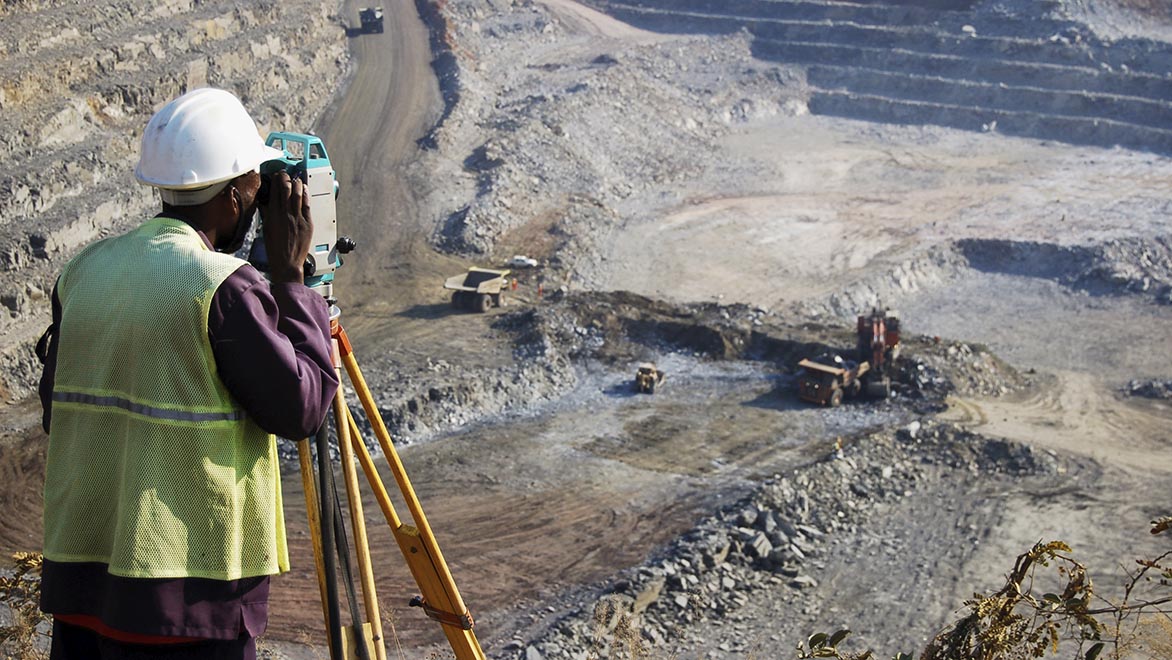The Function of an Engineer of Record in Ensuring Structural Stability and Conformity
The Function of an Engineer of Record in Ensuring Structural Stability and Conformity
Blog Article
The Interdisciplinary Approaches in the Geotechnical Market: Bridging the Space Between Design, Geology, and Environmental Science for Optimum Job Outcomes
The combination of engineering, geology, and environmental scientific research within the geotechnical sector is not merely useful; it is necessary for attaining ideal job end results. This interdisciplinary cooperation cultivates a comprehensive understanding of complex site conditions, permitting cutting-edge solutions to emerge. By examining key functions and successful study, we can discover the vibrant interplay that drives job success. Nonetheless, difficulties continue to be in efficiently handling these multidisciplinary initiatives, questioning about future fads and possible innovations. What approaches might emerge to facilitate this crucial partnership and boost the efficacy of geotechnical practices?
Importance of Interdisciplinary Cooperation
The relevance of interdisciplinary cooperation in the geotechnical market can not be overstated. Efficient geotechnical jobs require the integration of varied proficiency from numerous areas, including engineering, geology, and ecological science. This partnership guarantees that all aspects of a job are considered, causing comprehensive solutions that deal with intricate difficulties.
When functioning in isolation,Interdisciplinary cooperation fosters innovation by allowing experts to share understandings and methods that might not be noticeable. By leveraging the strengths of numerous techniques, teams can recognize prospective dangers, optimize style processes, and boost the sustainability of geotechnical jobs. In addition, such collaboration advertises a holistic understanding of site-specific conditions, which is crucial for exact evaluation and decision-making.
The complexity of geotechnical projects requires a worked with strategy to analytical. Eventually, interdisciplinary cooperation is vital for advancing best techniques and accomplishing excellence in the geotechnical market.
Secret Roles of Each Technique
Cooperation amongst numerous disciplines is not simply valuable; it is vital for the successful execution of geotechnical projects. Each self-control-- design, geology, and environmental scientific research-- plays an unique yet interconnected role that contributes to project efficiency and sustainability.
Geotechnical designers are primarily in charge of making structures and making certain architectural stability. They analyze soil and rock homes to assess load-bearing abilities, giving vital information for risk-free construction practices. Their experience allows the formulation of ingenious options to complicated difficulties.

Ecological scientists assess the potential influences of building and construction on ecological communities and water sources. They conduct ecological analyses and create reduction approaches to minimize unfavorable effects. By integrating eco-friendly considerations, they ensure conformity with laws and advertise sustainability throughout the job lifecycle.
Study of Successful Integration
Effective integration of geotechnical techniques can be exhibited through different study that highlight the efficiency of team effort in resolving complicated design obstacles. One significant example is the building of the Hong Kong-- Zhuhai-- Macau Bridge, where a collaborative strategy involving geotechnical design, geology, and ecological science was essential. Rock hounds and engineers worked in unison to evaluate the seabed problems and optimize the foundation layout, making sure go now security and lessening ecological influence.
An additional impactful situation is the renovation of slope security in the San Francisco Bay Location, where an interdisciplinary group combined geotechnical evaluation with environmental analyses. By incorporating geological studies and hydrological researches, the group efficiently recognized possible landslide threats and implemented reliable mitigation actions, boosting safety and security and sustainability.
Furthermore, the redevelopment of Brownfield websites often requires a multidisciplinary technique. In one situation in Chicago, partnership amongst geotechnical engineers, environmental scientists, and metropolitan planners led to the successful remediation of infected dirt, permitting for the safe makeover of the website into an area park. These study show that interdisciplinary collaboration not just addresses technical obstacles however also cultivates ingenious solutions that benefit both communities and projects.
Challenges in Multidisciplinary Projects
.webp)
Furthermore, collaborating timetables and workflows among various teams can be bothersome, specifically when each technique has special project milestones and deliverables. This imbalance can cause hold-ups and boosted costs. The obstacle of resource appropriation likewise looms huge; guaranteeing that specific experience is offered at essential times needs careful planning and foresight.
Finally, governing compliance presents another significant challenge. Each self-control may face various regulative frameworks, and straightening these demands to meet task purposes can be lengthy and intricate. Dealing with these challenges demands strong management and reliable communication approaches to foster cooperation and make certain that multidisciplinary groups work cohesively in the direction of shared goals.
Future Trends in Geotechnical Practices
As the geotechnical sector develops, emerging trends are reshaping techniques to attend to the difficulties encountered in multidisciplinary tasks - consulting engineer. One substantial trend is the raised integration of advanced technologies, such as man-made intelligence and artificial intelligence, right into geotechnical analysis and design. These modern technologies improve predictive modeling and danger analysis, enabling engineers to make even more enlightened choices throughout the job lifecycle

Additionally, the fostering of digital doubles and real-time monitoring systems is coming to be much more prevalent. These devices help with recurring analysis of dirt problems and structural performance, permitting prompt interventions when problems develop.
Verdict
In final thought, the combination of design, geology, and environmental scientific research is essential for achieving optimal end results in the geotechnical industry. Effective case researches show the benefits of this technique, while recognizing the challenges faced in multidisciplinary jobs.
The assimilation of design, geology, and ecological scientific research within the geotechnical market is not merely useful; it is essential for attaining ideal project end results. Reliable geotechnical jobs need the assimilation of diverse knowledge from different fields, consisting of design, geology, and ecological science.Browsing helpful site the intricacies of multidisciplinary projects in the geotechnical sector presents a number of considerable challenges.As the geotechnical market progresses, arising trends are improving methods to resolve the challenges encountered in multidisciplinary tasks. Geotechnical engineers are increasingly collaborating with ecological scientists to ensure that jobs align with sustainability goals and conform with regulatory demands.
Report this page